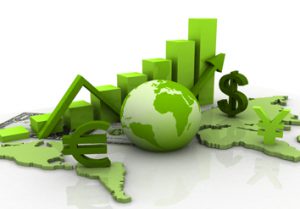
Average long-term mortgage rate ticks down
Borrowing costs on 15-year fixed-rate mortgages, popular with homeowners refinancing their home loans, rose this week.

Borrowing costs on 15-year fixed-rate mortgages, popular with homeowners refinancing their home loans, rose this week.

However, since March, job creation has fallen to an average 35,000 a month, compared to 71,000 in the year ended in March.

While 84% of the people born in 1950 became homeowners at some point in their working lives, the researchers estimated that only 74% of 1990 babies will follow suit.

But economists caution that persistent and potentially worsening inflation could make a January interest rate cut from the Fed less likely.

A recent report by consumer advocacy agencies said Instacart offered nearly three out of every four grocery items to shoppers at multiple prices as part of an experiment.

Lawmakers in both parties view simmering fury over the cost of living as the top issue in next year’s midterm elections and are pitching a growing profusion of proposals to tackle the notoriously difficult problem of affordability.

December serves as a deadline of sorts for donors, with the National Philanthropic Trust estimating that nearly one-third of annual giving happens in the final month.

The report lands at a moment of growing uncertainty about the broader economic outlook, with job growth slowing sharply in recent months.

Over the last year, the tech industry has been reshaping itself amid economic uncertainty, reorganization around artificial intelligence and a push to become more cost-efficient.
We’re competing for these projects not just with other cities and states but with countries across the globe.

Inflation concerns ranked as the second-biggest problem for small firms behind labor quality.

Small businesses are being impacted by economic instability, despite national predictions that call for record spending at small businesses this holiday season.

Artificial intelligence is spurring big investments, big opportunities and big disruptions, speakers said at an Elevate Ventures event Thursday afternoon in downtown Indianapolis.

Dealmakers are banking on markets remaining calm enough to sell on those commitments to investors.

The nation’s shoppers might feel gloomy about the economy but they certainly were in the mood to shop over the five-day Thanksgiving weekend that wrapped up on Cyber Monday.

The survey suggests the nation’s manufacturing base remains bogged down by trade policy uncertainty and elevated production costs.

The S&P 500 is still up more than 12% for the year and the tech-heavy Nasdaq is up more than 15%.

Wednesday’s announcement means the September jobs numbers will likely get extra scrutiny Thursday.

A drop in imports and the trade deficit is good for economic growth because foreign products are subtracted from the nation’s gross domestic product.

Tariffs have caused pain for consumers this year, but they could lead to a resurgence in U.S. manufacturing in which Indiana would benefit, a Fifth Third Bank executive said Thursday morning at IBJ’s 2026 Economic Forecast breakfast.